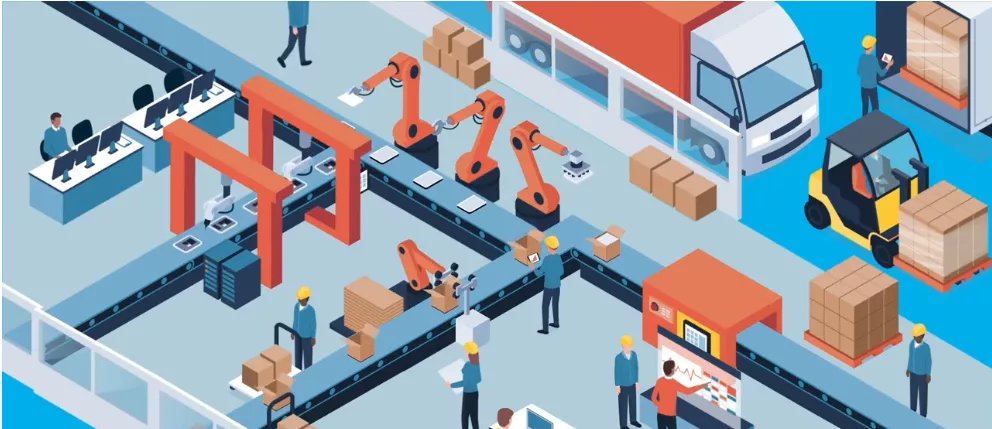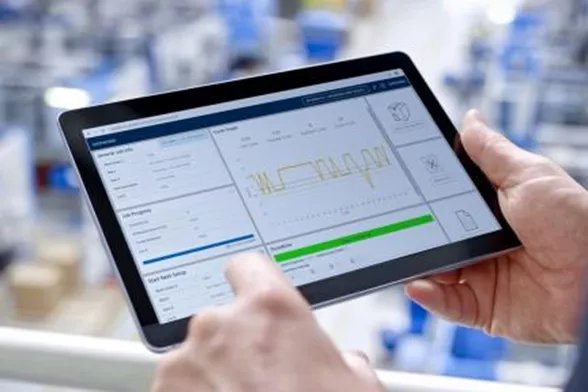Join the forum for Designers!
Your expertise is vital to the community. Join us and contribute your knowledge!
Join the Forum NowShare, learn and grow with the best professionals in the industry.
#3. It’s No Longer Being Supported
Many legacy ERP systems were created in the 1980s and early 1990s and were often based on older technology, such as PIC, Progress, or DOS.
Between 2000 and 2010, it was commonplace for legacy system founders to sell their businesses to larger software companies. The acquiring company would then cut the sales, marketing, and development costs out of the legacy system’s operating infrastructure. They would typically keep one or two key development and support personnel to keep the system afloat, then raise or hold maintenance fees, cutting out all other costs.
Four main issues arose for legacy ERP users from this market consolidation:
- There was no commonality between the old and the new system. From a training and implementation perspective, this meant starting over.
- New systems lacked the deep, industry-specific functionality of the older system by giving up a lot of finely-tuned business processes to use the new system.
- Many of the new systems’ developers overreached on the underlying system programming languages, middleware, and databases, resulting in technical complexity and slow performance.
- Many ERP companies increased support fees shortly after acquisition, alienating the legacy customer base.
Several early ERP system companies did have the foresight to re-platform their systems. Today, these products offer rich, industry-specific functionality and modern technology that enables advanced features like mobile apps and touchscreen user interfaces. They are often the best choice for small and mid-market companies that require deep functionality and fast system performance.
#4. Customer or Regulatory Requirements are Demanding Modern Tools and Compliance Programs
Moving a contract to close can halt to a stop when the customer has regulatory or procedural requirements that cannot be met by your current ERP software.
Many manufacturers face difficulties expanding their businesses due to the lack of advanced features offered by an ERP system. Whether you are using a legacy system that no longer receives support, managing multiple Excel spreadsheets and QuickBooks, or struggling with software that is too generic or incompatible with manufacturing, it is crucial to consider upgrading to a more contemporary ERP solution.

The following regulatory challenges can be solved with comprehensive ERP:
- Serial and Lot Tracking: A comprehensive serial and lot tracking allows you to automatically track the lifecycle of every piece, part, box, and pallet in your company.
- Quality and Risk Management: Mitigate risk, and adhere to strict certification and compliance requirements with a suite of quality management products, including certificates of conformance, document control, SPC, quality audit, MRB, ECO, CAR, and PLM.
- Complicated Label Requirements: A comprehensive labeling application with features specific to your manufacturing industry can
- Create personalized labels for customers with unique barcodes.
- Print labels of varying sizes and colors for easy part identification.
- Manage multiple label types (e.g., product, container, shipping, and mix-load)
- Eliminate any discrepancies in items.
- Make use of label sequencing capabilities.
- Consistently produce accurate labels every single time.
- EDI (Electronic Data Interchange): Easily translate incoming files directly into your ERP software and automatically generate outgoing files for your customers and suppliers. Additionally, embedded EDI automatically alerts of changes in deliverables, quantities, or due dates for minute-to-minute order accuracy.
#5. It Lacks Manufacturing-Specific Features and Modules
A general-purpose ERP system meant for wholesale distribution or accounting lacks the features required by manufacturers. To evaluate your software, consider two key elements: Fit and Functionality.
A software’s functionality is comprised of the modules, tools, and features available to meet the needs of a business, such as finance and accounting, inventory and purchasing, production execution, warehouse management, and customer relationship management. A software’s fit encompasses how those tools can meet the needs of a specific business type and its processes.
Below is a detailed list to assist your internal evaluation of necessary software tools and features.
| Key ERP Software Functions | Details |
| Financial Accounting | General ledger, fixed asset, payables receivables (cash application and collections), cash management, budgeting, costing |
| Order Processing | Order entry, credit checking, pricing, available/capable to promise, forecasting, sales analysis |
| Material Resource Planning | Production planning, resource planning, scheduling, inventory control, purchasing |
| Supply Chain Management | Planning, supplier scheduling, product configurator, purchasing, inventory, claim processing, warehousing |
| Electronic Data Interchange (EDI) | Electronic interfaces for customer and suppliers, POs, shipping notifications, invoices |
| Warehouse Management | Receiving, put away, picking and packing |
| Business Intelligence Reporting & Dashboards | Standard reports, report writing, ad hoc queries, summary dashboards and alerts |
Once you have audited the functionality and fit of key features, ask your team questions like, “What makes our company unique?” and “What makes us consistently profitable?”
This way of thinking helps teams ascertain the core elements of their business value and strategy. It could be changing colors on the fly, cost control, unique pricing plans, or anything that is paramount to your value proposition. By defining this strategy, and considering it throughout the evaluation of ERP systems, you can ensure your final ERP solution complements these core values.
Suggested Video >> DELMIAWorks: Real-world Manufacturing Problems
#6. It Lacks Planning and Scheduling Functionality
The need to increase capacity is a great problem for any manufacturer to have. Instead of investing in new personnel, machines, and floor space to handle a rising workload, manufacturers should first consider increasing plant capacity to 100% by implementing a comprehensive ERP and MES solution capable of automating your shop floor. This approach is not only more cost-effective but also offers greater flexibility.
Businesses experience the immediate ROI of a comprehensive ERP solution when activating the process monitoring package of their shop floor module.
By establishing direct connections with work centers and high-value production equipment at the Programmable Logic Controller (PLC) and sensor level, process monitoring tools collect essential process parameters and instantly transmit them to an ERP solution for analysis. This seamless integration significantly enhances efficiency and productivity.
Because this communication happens in real-time, process monitoring transforms your ERP solution into an active participant in the manufacturing process.

Benefits of process monitoring include:
- Gather all critical production variables such as temperature, pressure, dimensions, weight, thickness, fill rate, and more.
- Automate the input of collected data into the ERP’s SPC module for accurate analysis and enhanced decision-making.
- Monitor job speed to ensure optimal part quality, and make necessary adjustments to future schedules.
- Swiftly detect and address rejects and parts deviating from specifications in real-time, rather than waiting for a production report hours later.
- Foster accountability across the organization by tracking unscheduled downtime, employee labor, and parts produced as they happen.
You can’t hide from real-time process monitoring; it exposes the truth about what is actually happening on your shop floor.
#7. It’s Outdated, Unreliable, and Causes Frequent Downtime
One of the most crucial signs that it’s time for a new ERP software is because of hardware failure or a vendor notification that the hardware is no longer supported. When hardware becomes unviable, you have a few options:
- Buy replacement hardware and continue with your old software.
- Find a third-party vendor to repair and support your old hardware.
- Update both your hardware and ERP software.
Typically, when hardware fails or becomes unstable, owners and business managers consider upgrading to a modern ERP solution. After making the decision, there are several choices for deploying a new software.
- On-premise- (in-house) based hardware and software
- Buying, implementing, and hosting new software in a data center with managed services from the vendor
- Moving to the Cloud or SaaS platform by renting software and hardware from a vendor

Join the forum for Designers!
Your expertise is vital to the community. Join us and contribute your knowledge!
Join the Forum NowShare, learn and grow with the best professionals in the industry.

